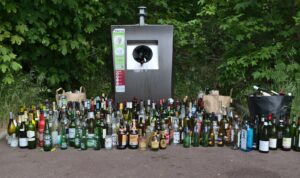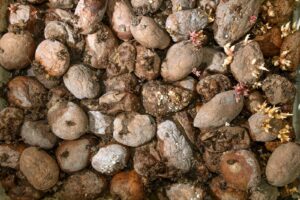The lost art of buying things for life
 Environmental campaigner and entrepreneur Tara Button has published a new book which encourages people to reconnect with the lost of art of buying things for life.
Environmental campaigner and entrepreneur Tara Button has published a new book which encourages people to reconnect with the lost of art of buying things for life.
A Life Less Throwaway builds on her work as the founder of the website buymeonce.com, which champions sustainable and longer-lasting products.
She spoke to Environment Journal about her new book and why manufacturers should build appliances that can last and why consumers should vote with their wallets and demand better products.
When did you first become interested in sustainability?
I’ve always been interested in sustainability. I remember going to the library and starting a club at school where we were going to save all the animals. I invented a projector when I was about seven or eight years old, out of my Dad’s torch and Sellotaped letters and I managed to get the words ‘Save the Earth’ onto my bedroom wall.
But the specific realisation that longevity was a key element of environmental policy that was not being looked at properly came in 2013. I was given a Le Creuset casserole pot and it sparked this train of thought. At first, I thought it was a wonderful object. It was built to last a lifetime. I thought I will be able to pass it down to my grandchildren, and I wished everything in my life was like this. Then I thought if everything in my life had that ‘for life’ quality then I would only be buying it once. I would end up buying less over time and if everyone behaved in this way, the environmental impact would be massive. There would be less going to landfill and people would try to fix their own things, instead of just chucking them out and getting a new version.
Is that when you launched your website buymeonce.com?
I did think it would be one of those ideas that would just stay in my head or someone else would do it. But the idea would not let me go, so I started to researching into how to build websites and looking at the longest-lasting products in each category. And very slowly, I started to put together something that resembled a website.
Was there anything that surprised you about the lifespan of some of the items you have looked at?
I think what is interesting is how our expectations about how long something should last have come down, and down, and down. Nowadays, we think nothing about buying an umbrella from a chemist when it’s raining. It might completely fall apart after the second rainstorm, but we don’t kick up a fuss about it.
I have to say, the big shocker is appliances. The rate at which appliances break has doubled since 2004. A boiler that was built back in the 1980s or 90s would have lasted 23 years, and now on average they last about 12.
These are big objects and lots of heavy materials go into them, but because they are put together so cheaply now, they are now seen as disposable.
And it is often said that not only are they not built to last, but the parts inside these objects cannot be reused, either…
This is a massive problem. You have washing machine companies who are now sealing in the drums, which makes the most likely things to go wrong inside of them now unfixable. You have to tear apart the whole washing machine in order to fix them. They claim it makes their washing machines more efficient, but I reject that as an argument. It’s more about bringing costs down, because it’s probably quicker for them to put together. It’s a disaster if you can’t fix these things. An engineering friend tore apart some toasters and tried to see what was inside of them. They had special screws on them, so you couldn’t get into them to fix them. The insides are really sharp and my friend ended up cutting his hand really badly on a toaster, because they made for one-time use. They are not made to be fixed.
Is the onus now on manufacturers to improve the longevity of these household items?
I think a few things need to happen at once. The manufacturers have very little incentive to make their products long-lasting and fixable, because consumers are not voting with their wallets. I’m trying to change consumer habits so they go for longer-lasting and fixable things. I would say consumers are at a disadvantage, because how can they tell how long a product will last or whether it is fixable or not. So I’m calling for government legislation so every manufacturer has to put an estimated lifespan on every appliance they make, in the same way there is a standardised label for energy efficiency. If the consumer can only see the style and the price of the product, that’s all they have to go on. They do not have information to make an informed choice.
There has been a lot of talk about single-use plastics recently in the press. Do you think the tide is turning against disposable items?
Absolutely! The Blue Planet effect was real. It was happening before there were lots of people talking about in environmental circles and beyond. I think the ‘bag tax’ put it into the public consciousness. I think people are absolutely sick of the amount of waste being produced and seeing those stories brought to life so compellingly on Blue Planet has brought it home to people in a way that seeing pictures of piles of waste just does not.
To find out more about her new book, A Life Less Throwaway, click here.















